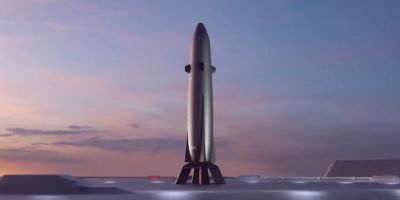 An artistic impression of the new neutron missile.
An artistic impression of the new neutron missile.
Photo: Rocket Lab
In March 2021, the space company Rocket Lab announced that it plans to develop a new rocket. This new rocket was called “Neutron” and in a few years should become the successor to the successful Electron rocket with which the company today launches small satellites into space. Today, Rocket Lab released more details about its new neutron rocket. Remarkably, the neutron missile will consist of a single unit and the missile can fully return to Earth, which makes this rocket launcher completely reusable. Rocket Lab plans to use the new neutron rocket not only to launch small satellites that will become part of large constellations, but also to launch space probes to study the moon or other planets.
The new neutron missile will have a length of 40 meters and a maximum diameter of 7 meters. At launch, this missile will weigh 480 thousand kilograms. In total, this missile will be able to carry payloads of up to 8000 kg in low Earth orbit (altitude 400 km). In addition, the neutron rocket should also be able to carry spacecraft up to 2,000 kilograms on its way to the Moon and even space probes weighing up to 1,500 kilograms on the way to Venus. What is remarkable about the design of the neutron rocket is that it consists of a single whole and that it is almost completely reusable. Once the missile reaches a certain height, it will open its cargo hold, where the second stage of the missile with the attached payload is launched. After that, the rocket will close its payload and return to Earth. Finally, the neutron rocket must land in a vertical position on a platform near the launch complex, after which it is ready for a new mission. Because the rocket’s nose cone is not repelled as with all other contemporary rockets, but can be opened and closed, according to the Rocket Lab, this saves a lot of costs and the rocket can be almost completely reused. Only the second, smaller stage of the rocket will burn up again in Earth’s atmosphere after the payload is released.
Upon launch, the neutron rocket will use seven new Archimedes rocket engines, each capable of directing one meganewton of thrust. The second stage of the rocket will be equipped with a single Archimedes rocket engine. Archimedes’ rocket engines must use methane and liquid oxygen as fuel and will be tested for the first time in 2022. Just as Rocket Lab did with its electronic rocket, the new neutron rocket will also use 3D-printed parts and carbon fiber as the main materials. By using light yet strong materials like carbon fibre, one can save the weight of the rocket and can launch heavier payloads than similar rockets from other airlines. With this new neutron rocket, Rocket Lab wants to compete with successful space companies like SpaceX and the company wants to use the new Neutron rocket to launch large constellations of satellites, as SpaceX does with its Starlink project. In addition, Rocket Lab also wants to use this new rocket to launch unmanned space probes that must be transported to the Moon or to other planets. According to the space company, the Neutron rocket should also be able to be used in manned spaceflight. The company aims to launch the new Neutron rocket for the first time in 2024 from the launch complex in the US state of Virginia. Rocket Lab describes its neutron rocket itself as the “2050 Rocket” and has ambitious plans for it. Rocket Lab was founded in 2006 and today is one of the most successful new generation aerospace companies.

“Coffee buff. Twitter fanatic. Tv practitioner. Social media advocate. Pop culture ninja.”











More Stories
Which can cause an increase in nitrogen.
The Central State Real Estate Agency has no additional space to accommodate Ukrainians.
The oystercatcher, the “unlucky national bird,” is increasingly breeding on rooftops.